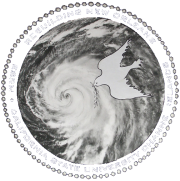Flying NOLA: Using Drones to Capture Southern Louisiana Deltas

Drones are a vital tool for the future of land management and assessment. At CSUCI, the ESRM program prides itself in the use and practice of using UAVs, or drones, to capture important coastal ecosystems. In this capacity, we flew over the Mississippi Delta to survey wetland degradation and rehabilitation on various barrier islands and marshes. Richie Blink, of Delta Discovery Tours, is in need of new, updated maps and aerial imagery to better understand coastal changes over time.
Drone pilots included myself and fellow ESRM students Walker Santos and Nick Cooper. While drones provide relatively quick “plug and play” accessibility, they are not without their fair share of trouble shooting necessities. While deployed in the field, we encountered problems with linking the RC to the drone, mobile landing sites, and signal loss. Despite these issues, we were able to capture video of our stop sites and the surrounding landscape. The positives of using drones include the instantaneous deployment and video capture, as well as the range of flight of both lateral distance and elevation. Drones are a much needed technology in visualizing our coastal wetlands and the opportunity to fly these areas is one to not be overlooked or taken for granted.
-Matt, Walker, Cooper





 At the 17th Street Pump Station, these generators may be one of the few things that will make or break the sustainability of keeping New Orleans afloat, the engineers themselves said they would last for five days in the eve of a 100 year event. But is it enough? As we’ve seen lately, climate change has made this unpredictable and arrogant. What will it take for people to actually prepare for worst, like a 500 year event that some believe is inevitable in our era, happens and we’re caught with our pants down again?
At the 17th Street Pump Station, these generators may be one of the few things that will make or break the sustainability of keeping New Orleans afloat, the engineers themselves said they would last for five days in the eve of a 100 year event. But is it enough? As we’ve seen lately, climate change has made this unpredictable and arrogant. What will it take for people to actually prepare for worst, like a 500 year event that some believe is inevitable in our era, happens and we’re caught with our pants down again?